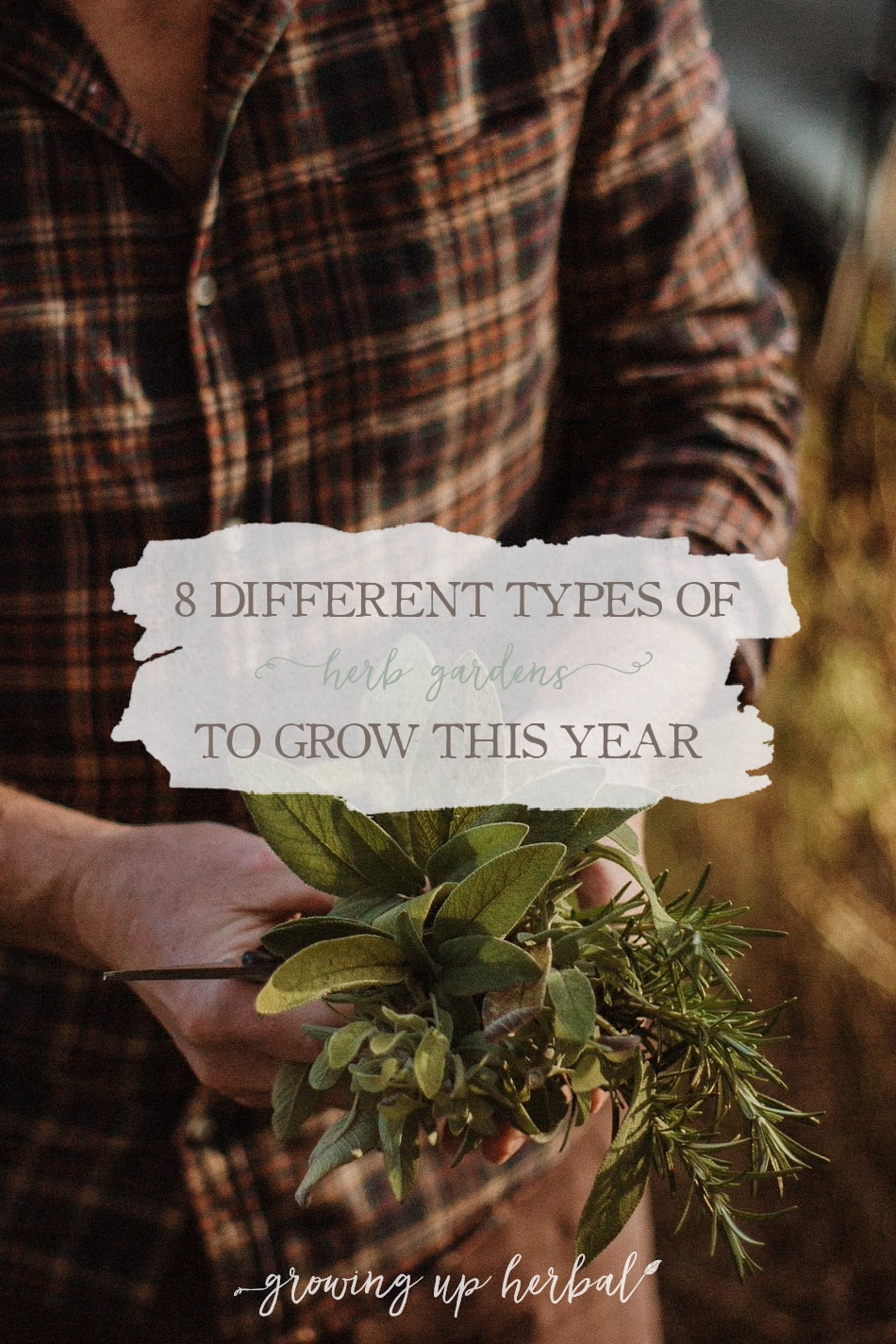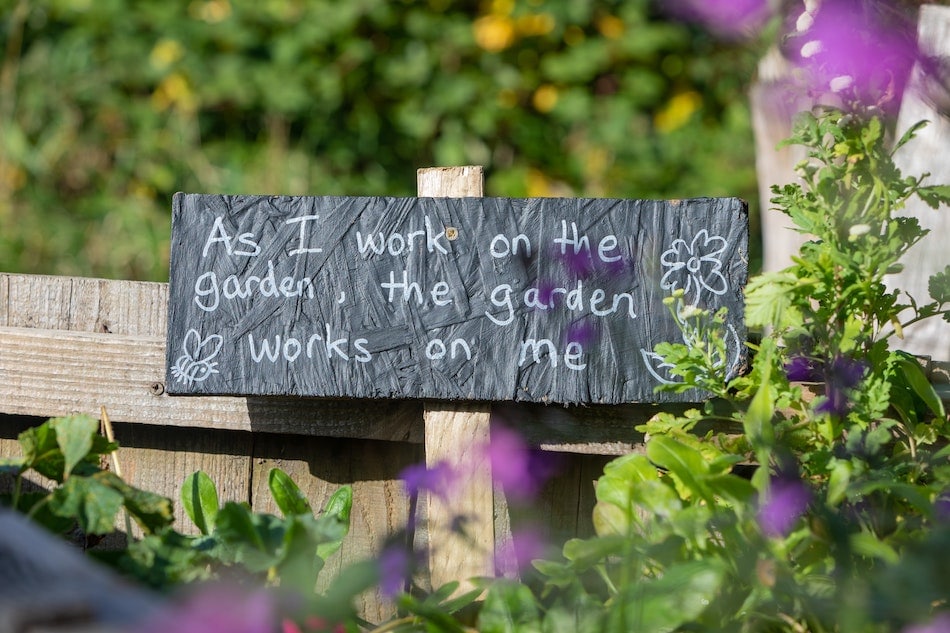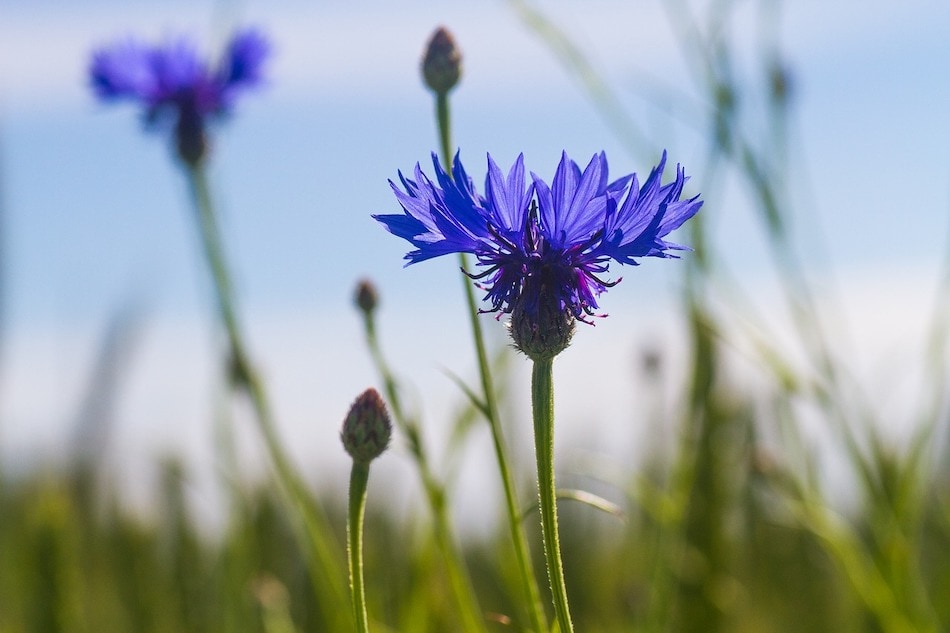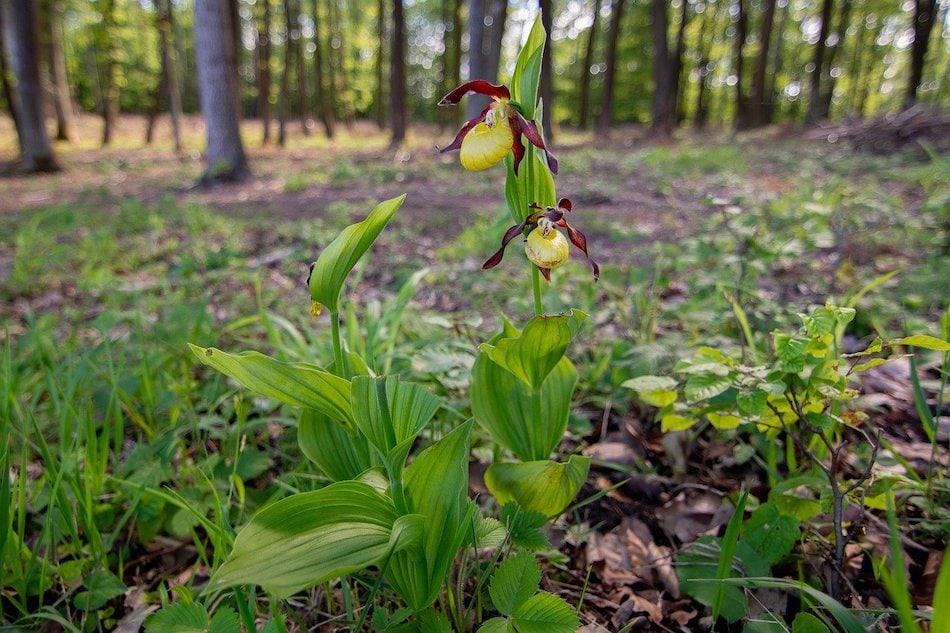
It is winter. The holidays have come and gone. The New Year is here. And I think it’s safe to say that most folks are in planning mode.
There are New Year’s resolutions and goals to think about. If you’re like me, you’re doing some homeschool planning for the coming year. You may even be filling out a new planner to help you better manage your work or home life.
And then for some people, these last days of winter are often spent making plans for the coming year’s garden — vegetable, herb, or both.
A friend recently tagged me on Instagram, sharing about the plans she’d made for her 2021 vegetable garden and asking me what kinds of herb seeds she should buy to include in her garden this year. Of course, I responded, but a short and sweet Instagram response isn’t really enough space to adequately explain all the possibilities of growing an herb garden. So, inspiration struck, I went with it, and here we are with this post.
I wrote a post almost four years ago about how to start an herb garden in 5 simple steps, but I didn’t get very specific about the types of herb gardens you can grow. That post has all the technical steps to get your garden started, but in this post, I want to share some herb garden inspiration with you if you, like my IG friend, are looking for ideas on which herbs to plant in your herb garden.

8 Different Types of Herb Gardens to Plant in 2021
Herbs can be planted wherever you want them to be. Seriously. Just walk out your front door, and you’re likely to see them here and there if you know what you’re looking for. In nature, there is rarely any order to how herbs grow other than their soil and light needs.
When it comes to growing herbs in a dedicated garden space, there really doesn’t have to be any structure to your garden unless you want there to be. The choice is completely up to you. You can plant a single herb in one specific place, or you can curate an entire herb garden filled with the herbs you want to grow. You can grow herbs in containers or in the ground. You can dedicate a space to herbs only, or you can combine your herbs with annual and perennial flowers, vegetables, and fruits. Again, the choice is 100% up to you.
If you’re interested in growing specific herbs together, but you’d like your herb gardens to have a theme, then the information below is going to be a perfect fit for you!
Today, I’m going to share 8 different types of herb gardens you can plant in 2021, including some ideas on what type of herbs to include in each garden.
My hope is to encourage and inspire you to pursue your herb garden dreams whether you’re going for a beautifully curated and organized garden or a laid-back wildflower style garden.
Please know that many of the herbs included in the following different types of herb gardens overlap quite a bit, meaning you’ll find one herb that can fit into 3 or 4 of these gardens. How great is that? If you wanted to do more than one type of herb garden, you can plant that same plant in each garden, or you could plant it one garden and skip it in the others.
Also, if you’re looking for resources on where to purchase plants and seeds for your herb gradens, you can find that information at the bottom of this article!
Okay, so let’s take a look at each of the different type of herb gardens below.

The Culinary Herb Garden
Culinary herb gardens are one of the easiest types of herb gardens to start with. Most of the herbs in this type of garden are hardy and plentiful. Some are perennials and will come back year after year while others are annuals and need to be replanted each year. Culinary gardens are best planted close to a door, preferably one that’s near the kitchen. This way they’re close by if you’re in the middle of cooking an amazing Italian dish, and you realize you need some fresh basil!
Some herb ideas for the culinary herb garden include:
- Sweet basil (Genovese basil)
- Oregano (Origanum vulgare)
- Thyme (Thymus vulgaris)
- Chives (Allium schoenoprasum)
- Cilantro (Coriandrum sativum)
- Marjoram (Origanum majorana)
- Rosemary (Salvia rosmarinus)
- Sage (Salvia officinalis)
- Dill (Anethum graveolens)
- Parsley (Petroselinum crispum)
- Mint (Mentha spp.)
- Stevia (Stevia rebaudiana)
- Winter savory (Satureja montana)

The Wildflower Herb Garden
Wildflowers are the perfect garden for the person who doesn’t want to deal with a lot of upkeep. They make lovely additions to fence rows, and they can help create an edging alongside of a pathway. They don’t have to be neat and orderly. You are more than welcome to rough up a patch of soil and scatter a mix of seeds over the surface and see what pops up!
Some herb ideas for the wildflower herb garden include:
- Shasta daisy (Leucanthemum × superbum)
- Echinacea (Echinacea purpurea)
- Boneset (Eupatorium perfoliatum)
- Evening Primrose (Oenothera biennis)
- Blue Vervain (Verbena hastata)
- Self Heal (Prunella vulgaris)
- St. John’s Wort (Hypericum perforatum)
- Cornflowers (Centaurea montana)
- Queen Anne’s Lace (Daucus carota)
- Lavender Hyssop (Agastache foeniculum)
- Chives (Allium schoenoprasum)

The Cold & Flu Herb Garden
One of the first ways many of us get to know herbs is by coming down with some sort of viral infection that is common during cold and flu season. Because herbs can be helpful for these particular ailments, we often find ourselves using them regularly during the colder months of the year to help soothe and ease the accompanying symptoms that go along with these types of infections.
Having a cold and flu herb garden is a great way to keep the plants that will become your herbal allies close at hand when these ailments come your way!
Some herb ideas for the cold and flu herb garden include:
- Elderberry (Sambucus nigra)
- Echinacea (Echinacea purpurea)
- Yarrow (Achillea millefolium)
- Peppermint (Mentha x piperita)
- Thyme (Thymus vulgaris)
- Garlic (Allium sativum)
- Boneset (Eupatorium perfoliatum)
- Lemon Balm (Melissa officinalis)
- Licorice (Glycyrrhiza glabra)
- Elecampane (Inula helenium)
- Horehound (Marrubium vulgare)

The Children’s Herb Garden
There are many herbs that are gentle and safe for kids, and many of these can be grown in a garden just for them. In fact, you could even get your kids involved and have them help you create a children’s herb garden filled with herbs that can be used just for them!
Some herb ideas for a children’s herb garden include:
- Chamomile (Matricaria chamomilla)
- Lavender (Lavandula angustifolia)
- Catnip (Nepeta cataria)
- Spearmint (Mentha spicata)
- Lemon Balm (Melissa officinalis)
- Elderberry (Sambucus nigra)
- Violet (Viola odorata)
- Marshmallow (Althaea officinalis)
- Oatstraw (Avena sativa)
- Fennel (Foeniculum vulgare)

The Shade Herb Garden
When we lived on the mountain, shade herbs thrived in the shadow of the tall timbers that surrounded our home. Whether you live in a mountainous region, or you simply have a shady area of your property (probably somewhere on the north-facing side), shade-loving herbs can be well-suited to a beautiful shade herb garden in this space.
Some herb ideas for the shade herb garden include:
- Boneset (Eupatorium perfoliatum)
- Feverfew (Tanacetum parthenium)
- Solomon’s seal (Polygonatum multiflorum)
- Skunk cabbage (Symplocarpus foetidus)
- Black Cohosh (Actaea racemosa)
- Blue Cohosh (Caulophyllum thalictroides)
- Anise Hyssop (Agastache foeniculum)
- Wood Betony (Betonica officinalis)
- Mint (Mentha spp.)
- Bee Balm (Monarda fistulosa)
- Angelica (Angelica archangelica)
- Nettle (Urtica dioica)

The Tea Herb Garden
Who doesn’t love a cup of tea any day of the year? I know I sure do. In fact, I created an entire course around incorporating tea into your life called The Sunday Steep! There are many, many herbs that can be used in tea form, but here are some to get your tea garden off to a good start.
Some herb ideas for the tea herb garden include:
- Tea (Camellia sinensis)
- Peppermint (Mentha x piperita)
- Spearmint (Mentha spicata)
- Lemon Balm (Melissa officinalis)
- Chamomile (Matricaria chamomilla)
- Lavender (Lavandula angustifolia)
- Bee Balm (Monarda fistulosa)
- Tulsi (Ocimum tenuiflorum)
- Catnip (Nepeta cataria)
- Hibiscus (Hibiscus rosa-sinensis)

The Poor Soil Herb Garden
Don’t have great quality soil to grow a lush garden in? No problem. These plants do well in poor soil. In fact, many of them can help keep poor soil in place so it doesn’t wash away, such as soil located on a steep hillside, and they can also help to add nutrients and compost back into the soil each year.
Some herb ideas for the poor soil herb garden include:
- Mullein (Verbascum thapsus)
- Yarrow (Achillea millefolium)
- Wormwood (Artemisia absinthium)
- Lemon Balm (Melissa officinalis)
- Lavender (Lavandula angustifolia)
- Sage (Salvia officinalis)
- Hyssop (Hyssopus officinalis)
- Chives (Allium schoenoprasum)
- St. John’s Wort (Hypericum perforatum)

The At-Risk Herb Garden
At-risk plants are those that have been over harvested in the wild and are at-risk of becoming endangered or extinct. As herbalists, one of our many jobs is to be friendly to the earth and the plants that it gifts to us. One way we can do that is by growing and using herbs that are at-risk in the wild. This will help them replenish in forests and meadows, and hopefully, eventually move them off of the at-risk plant list.
A lot of these at-risk plants are shade-loving plants so they could be included in your shade garden if you want!
Some herb ideas for the at-risk herb garden include:
- American Ginseng (Panax quinquefolius)
- Goldenseal (Hydrastis canadensis)
- Blue Cohosh (Caulophyllum thalictroides)
- Bloodroot (Sanguinaria canadensis)
- Trillium (Trillium spp.)
- Lady’s Slipper Orchids (Cypripedium spp.)
- White Sage (Salvia apiana)
- Eyebright (Euphrasia spp.)
Sourcing Plants
Finding the right plants for your garden can sometimes be a challenge. If you’re lucky, you may be able to find organic plants in a local nursery or greenhouse. Another option for sourcing plants is to get some cuttings or divided plants from a friend.
However, if organic plants aren’t available in your local area and you can’t get any from a friend, you can order organic seedlings from online nurseries, or you can order seeds to grow your own plants.
If you find organic seedlings for your herb gardens, you can skip step 2 and go straight to step 3 in this post. If you want to start your plants from seed, though, you’ll want to pay special attention to step 2!
In Closing
So there you have it. Eight ideas for different types of herb gardens you can plant this year. Plant them in pots or plant them in the ground — the choice is yours!
Now, if you already have an herb garden or if you decide to plant one of the gardens mentioned in this post, I would LOVE it if you shared a photo of it on Facebook or Instagram, tagging me in it at @growingupherbal, so I can see it! I love seeing other people’s gardens. It’s so inspiring, and it’s great to have a little community of people out there to go to if you have an herb-gardening related question as well!